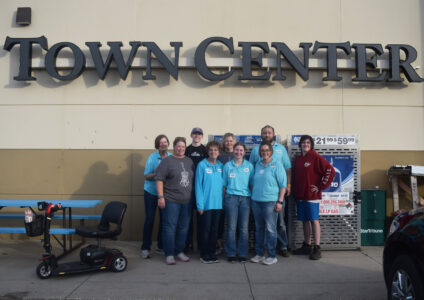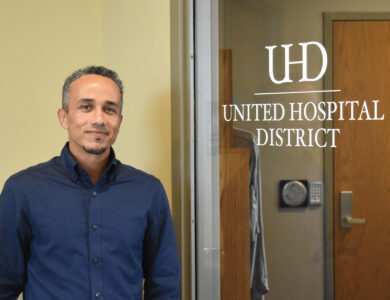FLF hears from aquatic specialist
FAIRMONT– The Fairmont Lakes Foundation Inc. (FLF) held its annual meeting on Monday at the shelter house at Gomsrud Park. The bulk of the meeting was a presentation from Dr. Ryan Wersal, an aquatic weed specialist.
FLF Chairman Jon Omvig spoke about the newly formed lakes management committee meeting, which has been meeting for the past four months and discussing water quality issues.
“As a part of that, Martin County Soil and Water (Conservation District, SWCD) contacted Dr. Ryan Wersal to do some vegetation surveys and vegetation surveys are required in order to apply for permits,” Omvig explained.
Wersal then introduced himself and shared about his work experience. He currently is a professor in the Biology department at Minnesota State University-Mankato.
“I’m a weed scientist by training… I specialize in managing aquatic systems,” Wersal said.
He said after he was contacted by SWCD, he and his students did a survey to get a baseline of what’s out there for aquatic vegetation to see what was native or not native.
“We did some basic water quality monitoring last year and this year we did delineation surveys to delineate all five basins to see how much Curly Leaf (Pondweed, CLP) was out there. And then the city applied for a permit to hopefully do some harvesting in the future,” Wersal said.
He added that he and his students are also doing turion sampling every month. Turions are buds on the CLP stalks that fall off and serve as its method of reproduction.
Next, Wersal went over a basic outline for a Lake Management Plan which included first undergoing a problem assessment and then implementing project management and ensuring education, monitoring and management of the plan.
He spoke about some of the other lakes in the state that he has studied and played a part in developing lake management plans for.
“Unfortunately, every lake in southern Minnesota has a problem. Most of them have the same problem,” Wersal said. “Every lake that I’ve worked on in the last five years has had Curly Leaf Pondweed.”
He went on to say that it’s the most wide-spread aquatic plant in the state of Minnesota.
Identifying problems, stakeholders, partners and funding sources was something that Wersal really stressed when developing a plan.
Wersal shared that he’s working on a lake in Faribault County that’s about 200 acres and not connected to anything, and he gave the county a price tag of about $1 million to address vegetation and phosphorus mitigation.
Speaking more about aquatic invasive species, Wersal said that the majority of aquatic invasive species come in at the boat ramps. He asked whether Fairmont had anyone on guard at the boat ramps, which it does not. He shared that Blue Earth County uses its aquatic invasive species funds to pay for people to be posted at and monitor the boat ramps and that it’s helped there.
He did say there is no Starry Stonewort, an aquatic invasive species, was not yet been detected south of Minneapolis and he’d like to keep it that way.
“I’d take Curly Leaf Pondweed over Starry Stonewort any day,” Wersal said.
Once Wersal finished his presentation he opened it up for questions and one person asked if when herbicide application is used to treat the lakes, whether it would need to be posted for the public.
He said a lot of communication comes form the Department of Natural Resources (DNR) throughout the process.
This triggered another person to ask whether the water from the lakes would be safe to drink after herbicide is applied.
“Safety comes down to product choice and the concentration that’s used,” Wersal said.
Questions also came about harvesting CLP, as has been talked about by the lakes management committee. Wersal said harvesting would be slower and more expensive.
He did, however, say it works well in small basins.
“I think harvesting can play a role. Is it going to be the only tool? Not in five basins with 260 to 270 acres of Curly Leaf out there. It’s not going to be fast enough unless you ran several harvesters and then the price is going to go up exponentially,” Wersal said.
In closing, Wersal said,”What tools do we have available and where can we best apply them?”
To wrap up the meeting, Omvig gave a quick recap of FLF’s activities over the past year, which included the annual ice fishing tournament and a spring fishing tournament. There was also the annual lake cleanup event which collects a lot of debris. FLF also coordinates the kayak rentals.
“I checked this morning and we had 102 rentals. The most we’ve had,” Omvig said.
In addition, FLF does fish stocking. Omvig said the group put in 6,000 yellow perch in the spring and 7,000 blue gills in the fall. He said SWCD helped fund a portion of the blue gills.
“We continue to look at carp management and we’ll see how we can move forward with that,” Omvig said.


